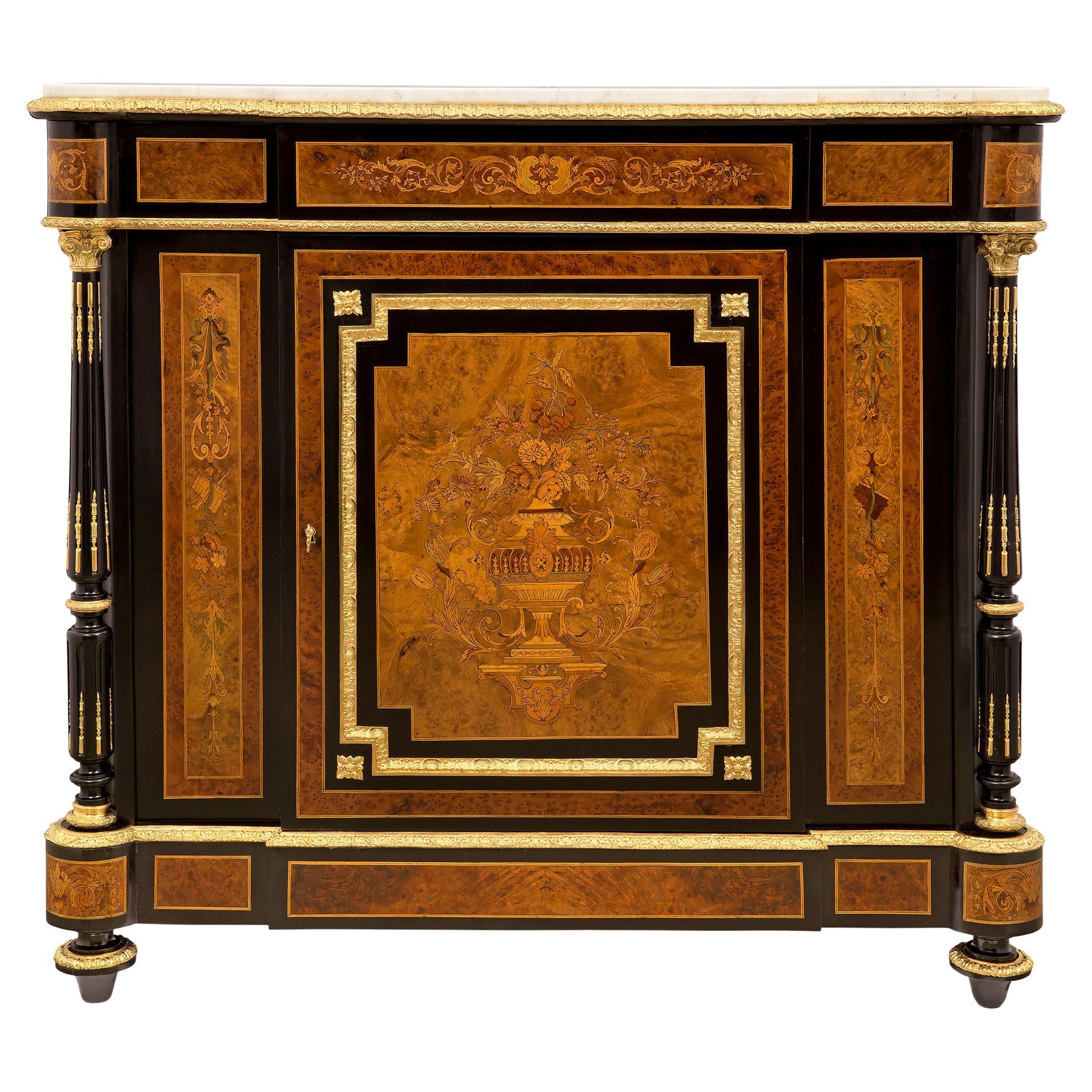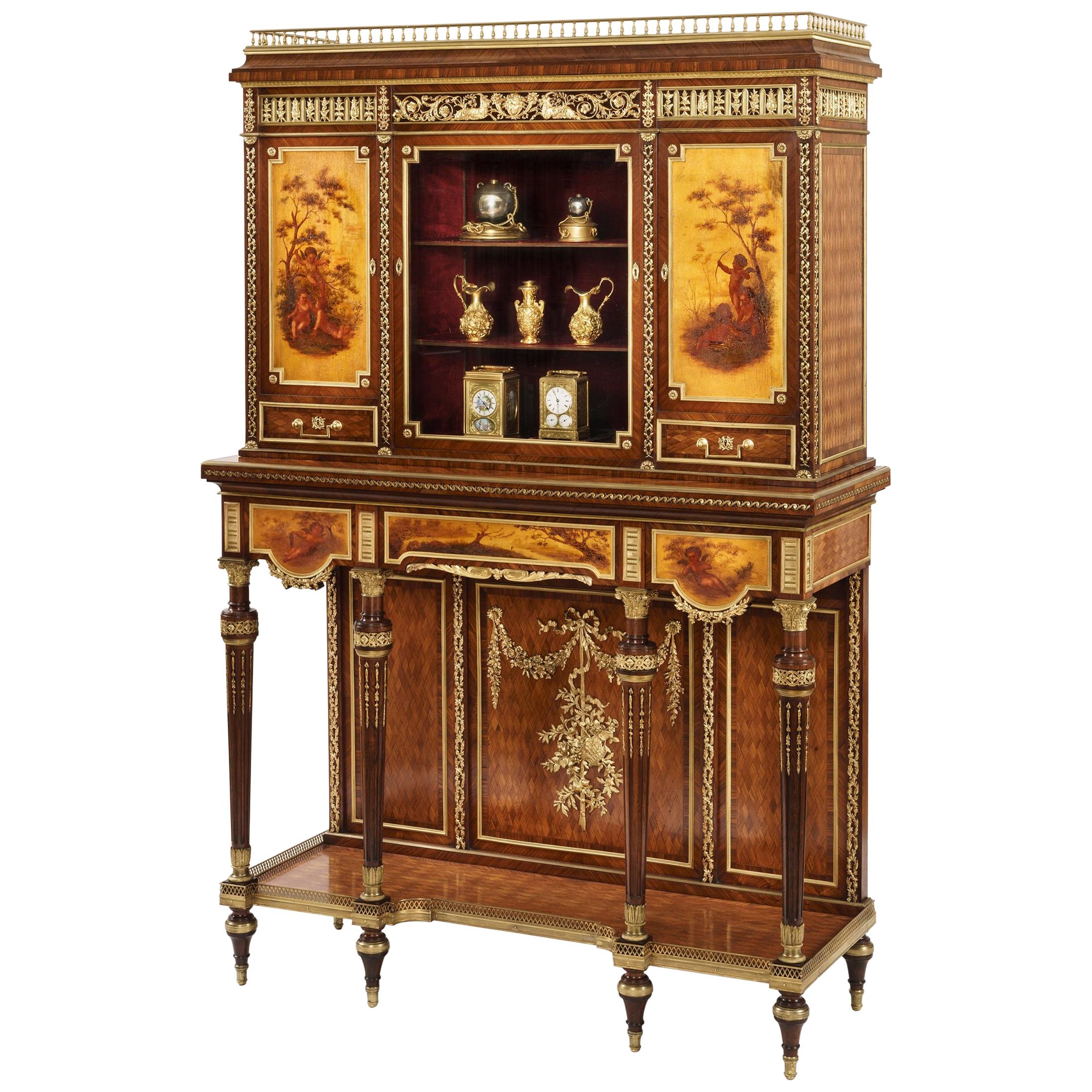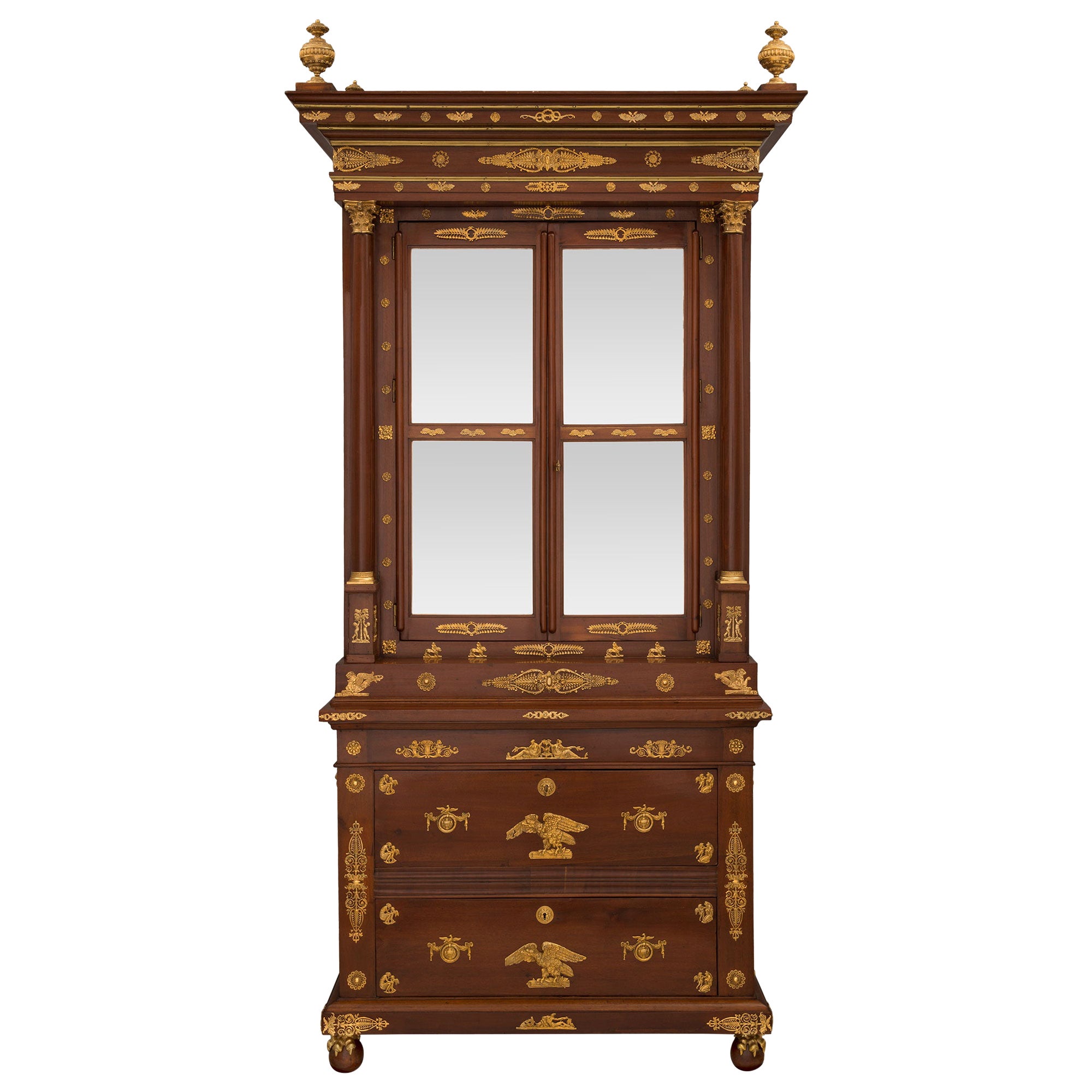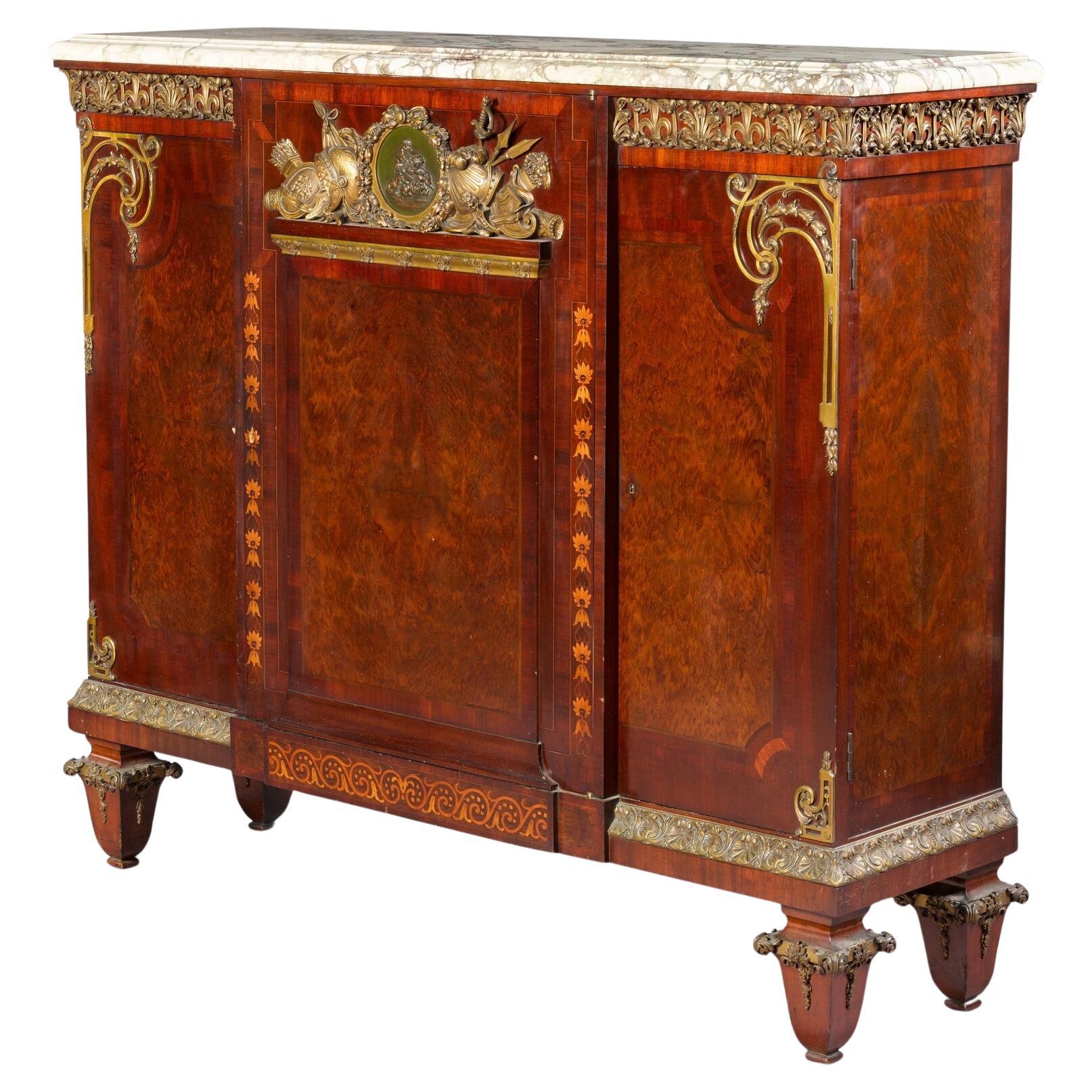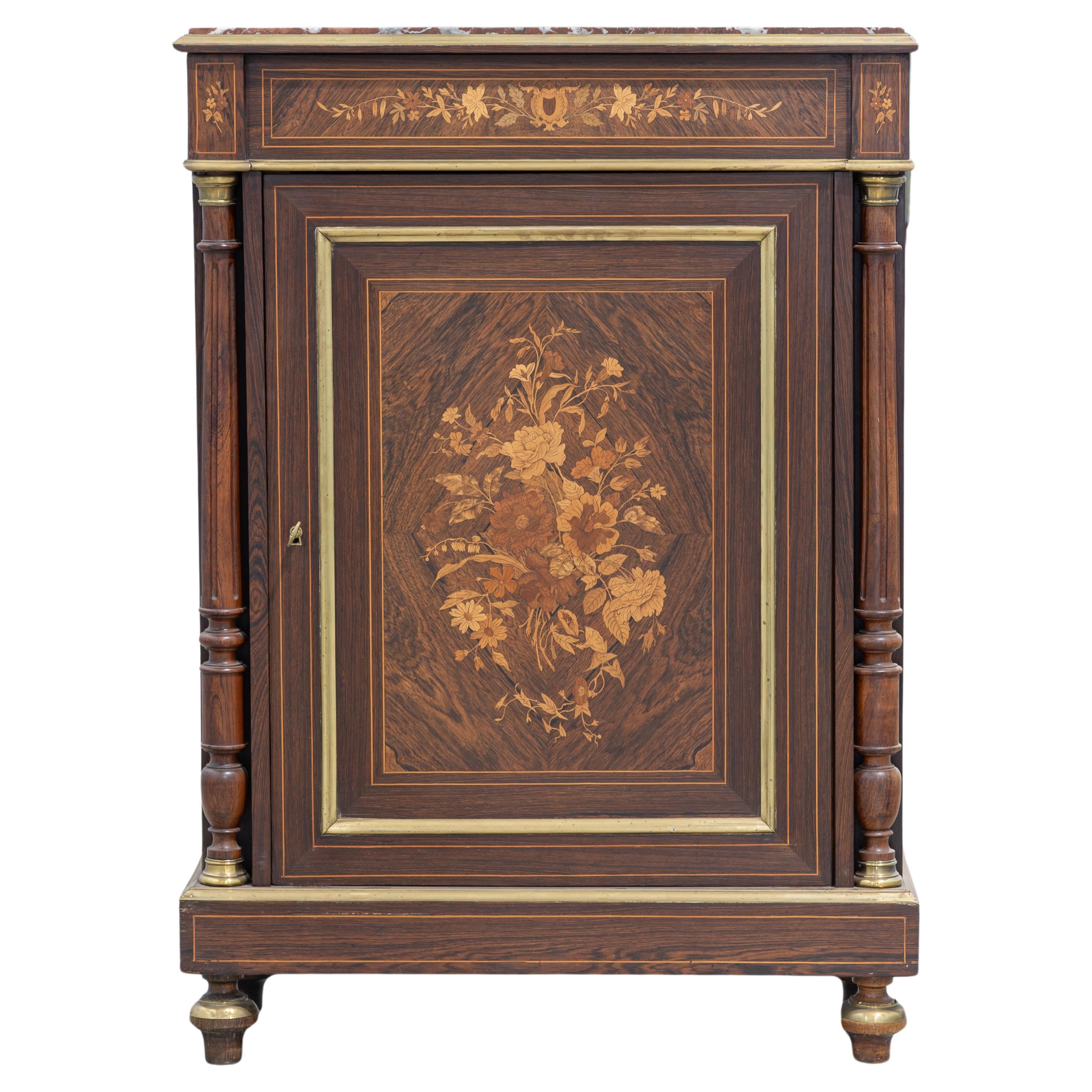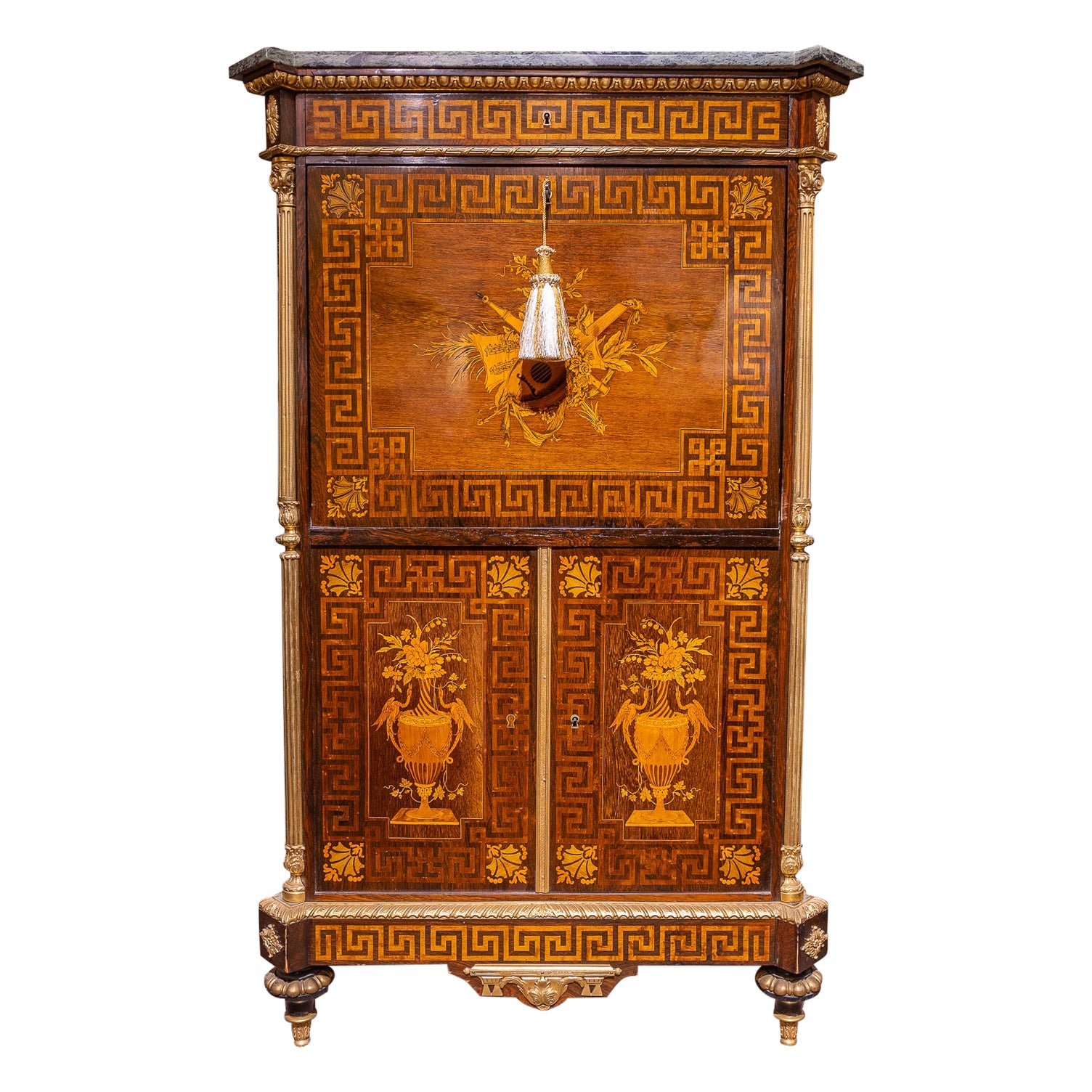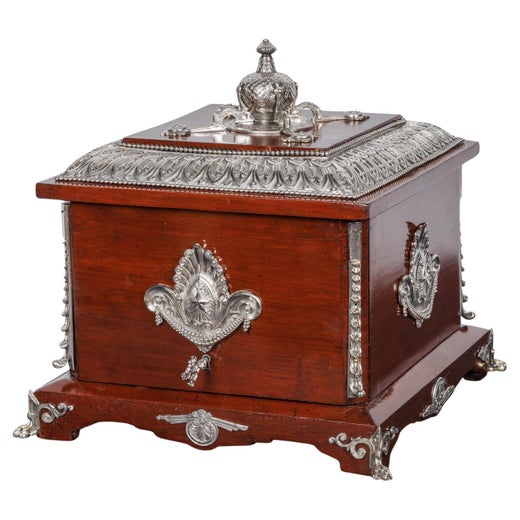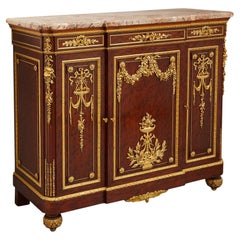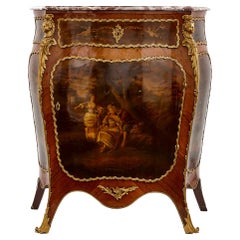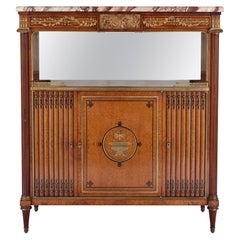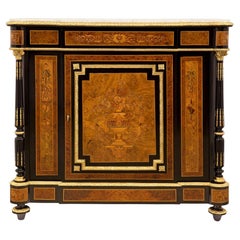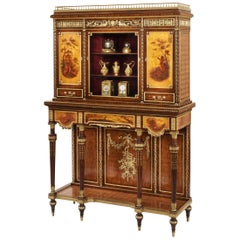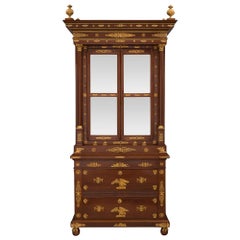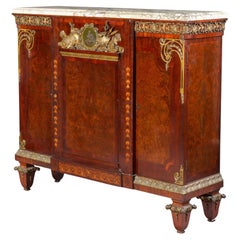Antique Napoleon III Period Oak and Silvered Bronze Tobacco Cabinet by Diehl
About the Item
- Creator:Charles-Guillaume Diehl (Cabinetmaker)
- Dimensions:Height: 50.99 in (129.5 cm)Width: 24.41 in (62 cm)Depth: 15.36 in (39 cm)
- Style:Neoclassical (In the Style Of)
- Materials and Techniques:
- Place of Origin:
- Period:
- Date of Manufacture:circa 1870
- Condition:Repaired: Cleaning and polishing.
- Seller Location:London, GB
- Reference Number:Seller: 158501stDibs: LU956313511632
Charles-Guillaume Diehl
Charles-Guillaume Diehl founded his cabinet making and decoration firm at 19 Rue Michel-Le-Comte in 1885. His workshops produced elegant little pieces of furniture in rosewood and thuja and novelties with bronze and porcelain embellishments. It was his luxury boxes, however, (liqueur cellarettes, cigar cabinets, games boxes, cashmere cases, jewelry cases) which assured Diehl’s renown. Already rewarded with a bronze medal at the Universal Exhibition of 1855 in Paris, he exhibited a jardinière with china columns and a liqueur cabinet at the Industrial Arts Exhibition in 1861. In collaboration with the designer Jean Brandely (active from 1867 until 1873), Diehl renovated his decorative repertory and created astonishing pieces of furniture in the Grecian style, which had a dazzling success at the Universal Exhibition in Paris in 1867, where his cabinets also won a silver medal. Certain motifs were so typical of Diehl’s work that they received extensive commentary by the art critic J. Mesnard in his book “Les Merveilles de l’Exposition Universal de 1867”. He writes of a table of which “the pendant bearing hooks and the fan-shaped radiating motif which ornaments the entablature are engraved with love” and a jewelry case where “The head in fine Grecian style makes up the essential part of the fine gilt bronze ornamentation”. For this Universal Exhibition, Diehl also formed a partnership with two famous sculptors: Emile Guillemin (1841–1907), who carved the relief for a mahogany sideboard with galvanic gilt bronzes and Emmanuel Frémiet (1824–1910), who executed the low relief for a cedar medal cabinet with marquetry and silver-plated bronzes. Diehl was again rewarded with a medal of honor at the Union Central Exhibition of 1869 and a progress medal at the Universal Exhibition in Vienna in 1873. Showered with praise by the critics, Diehl is considered one of the most innovative artists of the 19th century. His final appearance was at the 1878 Universal Exhibition in Paris, where he presented outside the competition, his most recent creations, including a work table in marquetry, which with its naturalistic grasshopper motif anticipated Art Nouveau.
- ShippingRetrieving quote...Shipping from: London, United Kingdom
- Return Policy
More From This Seller
View AllAntique Mid-19th Century French Neoclassical Cabinets
Marble, Ormolu
Antique 19th Century French Louis XV Cabinets
Marble, Ormolu
Antique Late 19th Century French Belle Époque Cabinets
Ormolu
Antique 19th Century French Neoclassical Cabinets
Marble, Ormolu, Bronze
Antique Late 19th Century French Louis XVI Buffets
Marble, Ormolu, Bronze
Antique Late 19th Century French Napoleon III Vitrines
Ormolu
You May Also Like
Antique 19th Century French Napoleon III Cabinets
Carrara Marble, Ormolu
Antique Late 19th Century French Napoleon III Cabinets
Ormolu, Bronze
Antique 19th Century Russian Empire Cabinets
Ormolu
Antique Late 19th Century French Cabinets
Mahogany
Antique 19th Century French Napoleon III Buffets
Marble
Antique Late 19th Century French Louis XVI Secretaires
Bronze
Read More
Exquisite Sèvres Porcelain Brings More to the Table than Dishes
The elegant ceramics represent the best of French artistry and innovation.
What Is Ormolu, and Why Are We Talking about It?
This golden material glamorized neoclassical furnishings and transformed upper-crust sitting rooms from France to Philadelphia in the 18th and early 19th centuries.
